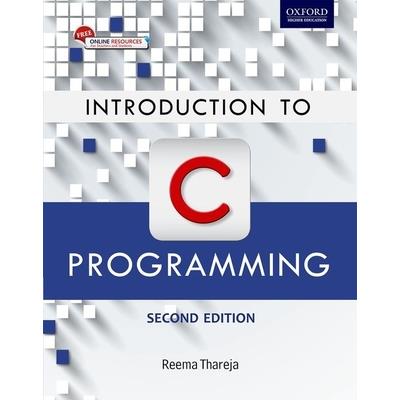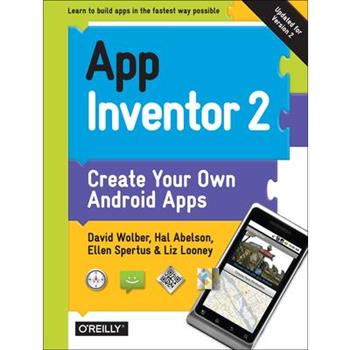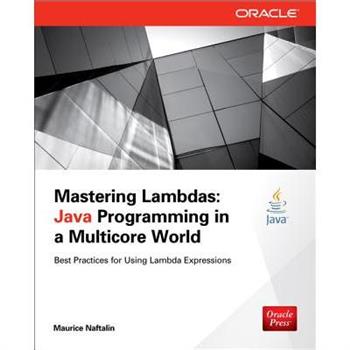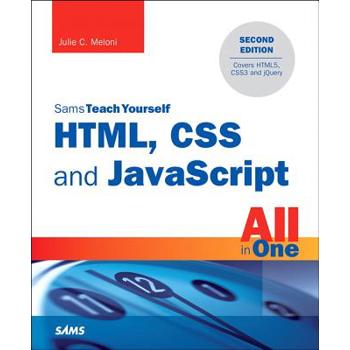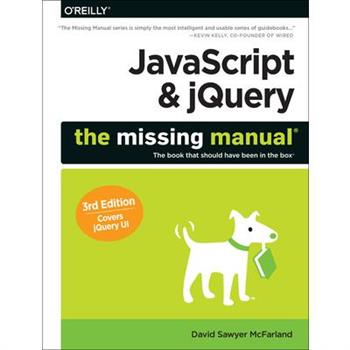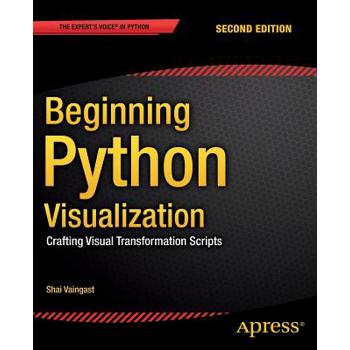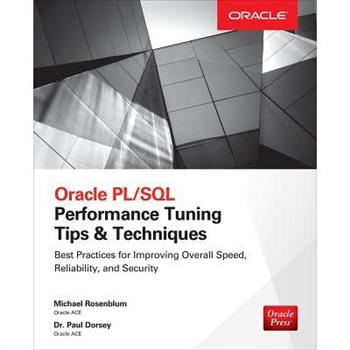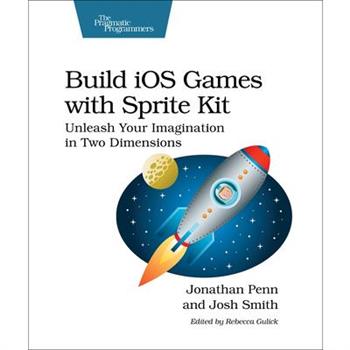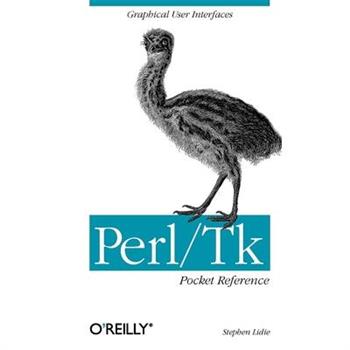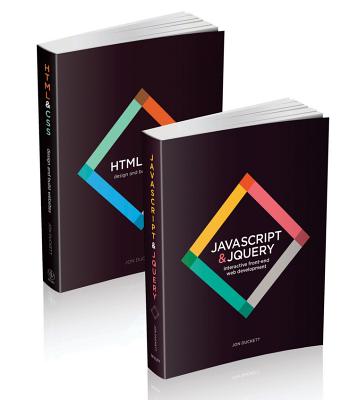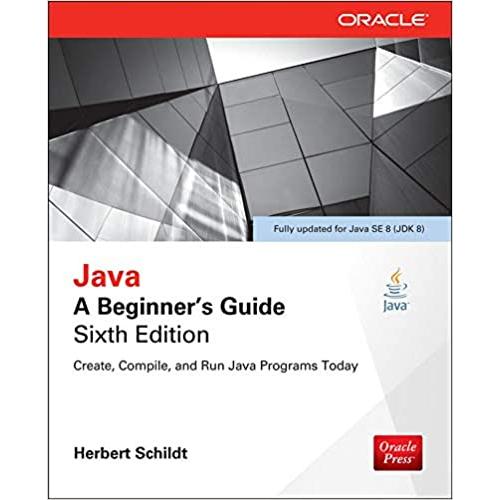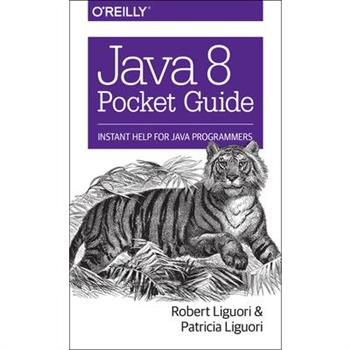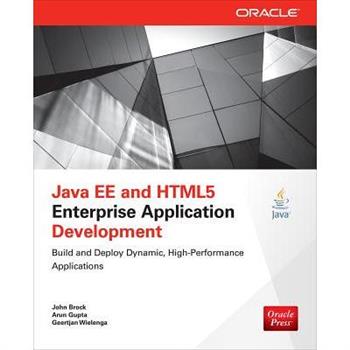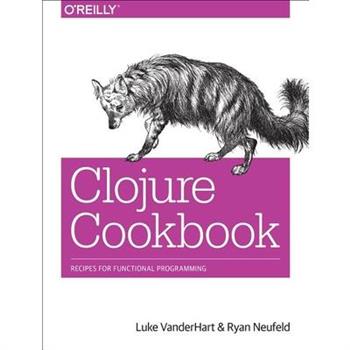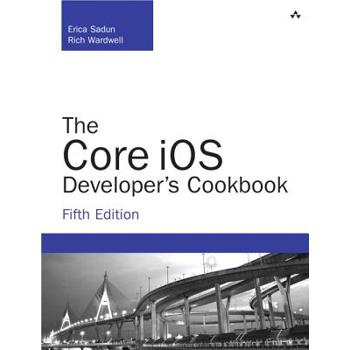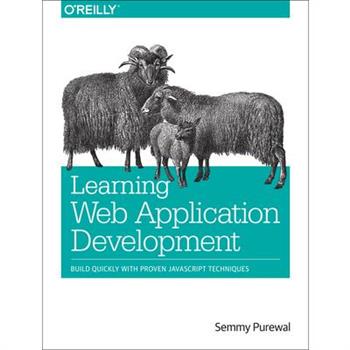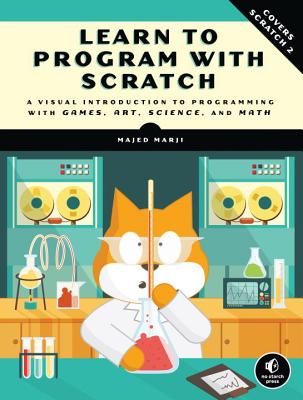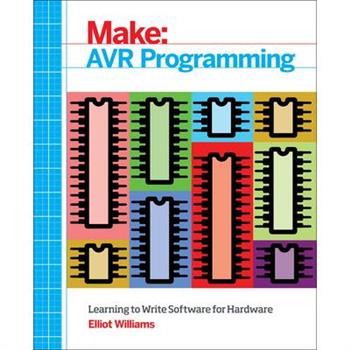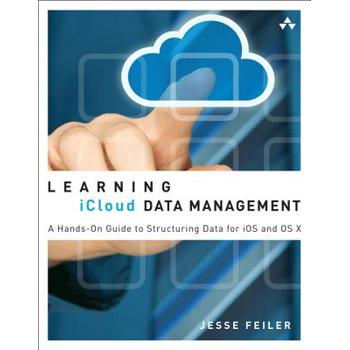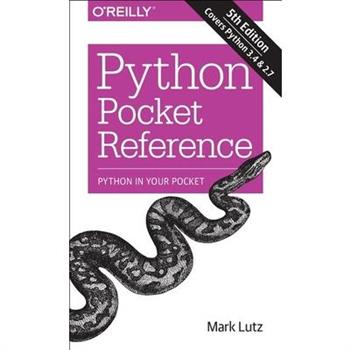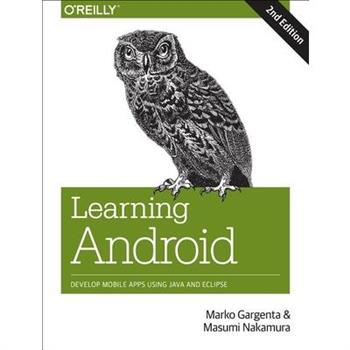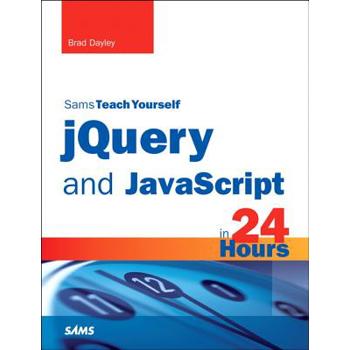Hello App Inventor!
Summary Hello App Inventor! introduces creative young readers to the world of mobile programming--no experience required! Featuring more than 30 fun invent-it-yourself projects, this full-color, fun-to-read book starts with the building blocks you need to create a few practice apps. Then you'll learn the skills you need to bring your own app ideas to life. Purchase of the print book includes a free eBook in PDF, Kindle, and ePub formats from Manning Publications. About the Book Have you ever wondered how apps are made? Do you have a great idea for an app that you want to make reality? This book can teach you how to create apps for any Android device, even if you have never programmed before. With App Inventor, if you can imagine it, you can create it. Using this free, friendly tool, you can decide what you want your app to do and then click together colorful jigsaw-puzzle blocks to make it happen. App Inventor turns your project into an Android app that you can test on your computer, run on your phone, share with your friends, and even sell in the Google Play store. Hello App Inventor! introduces young readers to the world of mobile programming. It assumes no previous experience. Featuring more than 30 invent-it-yourself projects, this book starts with basic apps and gradually builds the skills you need to bring your own ideas to life. We've provided the graphics and sounds to get you started right away. And a special Learning Points feature connects the example you're following to important computing concepts you'll use in any programming language. App Inventor is developed and maintained by MIT. What's InsideCovers MIT App Inventor 2How to create animated characters, games, experiments, magic tricks, and a Zombie Alarm clockUse advanced phone features like: Movement sensorsTouch screen interactionGPSCameraTextWeb connectivityAbout the Authors Paula Beerand Carl Simmons are professional educators and authors who spend most of their time training new teachers and introducing children to programming. Table of ContentsGetting to know App InventorDesigning the user interfaceUsing the screen: layouts and the canvasFling, touch, and drag: user interaction with the touch screenVariables, decisions, and proceduresLists and loopsClocks and timersAnimationPosition sensorsBarcodes and scannersUsing speech and storing data on your phoneWeb-enabled appsLocation-aware appsFrom idea to appPublishing and beyond
Introduction to C Programming
The book starts with an introduction to programming in general followed by a detailed introduction to C programming. It then delves into a complete analysis of various constructs of C such as decision control and looping statements, functions, arrays, strings, pointers, structure and union, file management, and pre-processor directives. It also provides a separate chapter on linked list detailing the various kinds of linked lists and how they are used to allocate memory dynamically. A highly detailed pedagogical approach is followed throughout the book, which includes plenty of examples, figures, programming tips, keywords, and end-chapter exercises. These features should render the book an ideal resource for students to master and fine-tune the art of writing C programs.
Beginning Programming With C++ for Dummies
Learn to program with C++ quickly with this helpful For Dummies guide Beginning Programming with C++ For Dummies, 2nd Edition gives you plain-English explanations of the fundamental principles of C++, arming you with the skills and know-how to expertly use one of the world's most popular programming languages. You'll explore what goes into creating a program, how to put the pieces together, learn how to deal with standard programming challenges, and much more. Written by the bestselling author of C++ For Dummies, this updated guide explores the basic development concepts and techniques of C++ from a beginner's point of view, and helps make sense of the how and why of C++ programming from the ground up. Beginning with an introduction to how programming languages function, the book goes on to explore how to work with integer expressions and character expressions, keep errors out of your code, use loops and functions, divide your code into modules, and become a functional programmer. Grasp C++ programming like a pro, even if you've never written a line of code Master basic development concepts and techniques in C++ Get rid of bugs and write programs that work Find all the code from the book and an updated C++ compiler on the companion website If you're a student or first-time programmer looking to master this object-oriented programming language, Beginning Programming with C++ For Dummies, 2nd Edition has you covered.
App Inventor 2
Yes, you can create your own apps for Android devices--and it's easy to do. This extraordinary book introduces you to App Inventor 2, a powerful visual tool that lets anyone build apps. Learn App Inventor basics hands-on with step-by-step instructions for building more than a dozen fun projects, including a text answering machine app, a quiz app, and an app for finding your parked car! The second half of the book features an Inventor's Manual to help you understand the fundamentals of app building and computer science. App Inventor 2 makes an excellent textbook for beginners and experienced developers alike. Use programming blocks to build apps--like working on a puzzle Create custom multi-media quizzes and study guides Design games and other apps with 2D graphics and animation Make a custom tour of your city, school, or workplace Control a LEGO(R) MINDSTORMS(R) NXT robot with your phone Build location-aware apps by working with your phone's sensors Explore apps that incorporate information from the Web
Java Fx for Dummies
Unleash the power of JavaFX for a wide range of devices JavaFX For Dummies gives you access to an innovative software platform that allows you to create and deliver rich Internet applications that can run across a wide variety of connected devices. This accessible book highlights the most important features of this powerful graphics platform, giving you the tools to understand it quickly and easily! No experience with JavaFX? No problem. JavaFX For Dummies has been written especially for newbies and it also serves as a great reference resource for more experienced Java developers. Author Doug Lowe has been writing programming books for decades, and he brings his experience and passion to this guide, sharing his expert approach to coding using JavaFX. The book shows you how to work with JavaFX controls, how to enhance your scenic design, and also offers advice on how to make a splash with your programs. Then, the author wraps it all up with extra recommendations and resources to guide you as you move forward. Helps developers quickly learn to take advantage of JavaFX's lightweight, high-performance platform Highlights essential JavaFX features for simple coding that can be rolled out across multiple devices Instructs readers on methods for creating compelling, visually appealing applications Includes recommendations and resources for honing your JavaFX skills With JavaFX For Dummies, you'll be on your way to easier, more efficient coding for a variety of connected devices.
Mastering Lambdas
Publisher's Note: Products purchased from Third Party sellers are not guaranteed by the publisher for quality, authenticity, or access to any online entitlements included with the product.The Definitive Guide to Lambda ExpressionsMastering Lambdas: Java Programming in a Multicore World describes how the lambda-related features of Java SE 8 will enable Java to meet the challenges of next-generation parallel hardware architectures. The bookexplains how to write lambdas, and how to use them in streams and in collection processing, providing code examples throughout. You'll learn how to use lambda expressions to take full advantage of performanceimprovements provided by today's multicore hardware. This Oracle Press book covers: Why lambdas were needed, and how they will change JavaprogrammingSyntax of lambda expressionsThe basic operation of streams and pipelinesUsing collectors and reduction to end pipelinesCreating streamsSpliterators, the fork/join framework, and exceptionsExamining stream performance with microbenchmarkingAPI evolution using default methods
Html, CSS and JavaScript All in One, Sams Teach Yourself
In just a short time, you can learn how to use HTML5, Cascading Style Sheets (CSS3), and JavaScript together to design, create, and maintain world-class websites. Using a straightforward, step-by-step approach, each lesson in this book builds on the previous ones, enabling you to learn the essentials from the ground up. Clear instructions and practical, hands-on examples show you how to use HTML to create the framework of your website, design your site's layout and typography with CSS, and then add interactivity with JavaScript and jQuery. Step-by-step instructions carefully walk you through the most common web development tasks Practical, hands-on examples show you how to apply what you learn Quizzes and exercises help you test your knowledge and stretch your skills Learn how to... Build your own web page and get it online in an instant Format text for maximum clarity and readability Create links to other pages and to other sites Add graphics, color, and visual pizzazz to your web pages Work with transparent images and background graphics Design your site's layout and typography using CSS Get user input with web-based forms Use JavaScript to build dynamic, interactive web pages Add AJAX effects to your web pages Leverage JavaScript libraries such as jQuery Make your site easy to maintain and update as it grows Contents at a Glance Part I Getting Started on the Web 1 Understanding How the Web Works 2 Structuring an HTML Document 3 Understanding Cascading Style Sheets 4 Understanding JavaScript 5 Validating and Debugging Your Code Part II Building Blocks of Practical Web Design 6 Working with Fonts, Text Blocks, Lists, and Tables 7 Using External and Internal Links 8 Working with Colors, Images, and Multimedia Part III Advanced Web Page Design with CSS 9 Working with Margins, Padding, Alignment, and Floating 10 Understanding the CSS Box Model and Positioning 11 Using CSS to Do More with Lists, Text, and Navigation 12 Creating Fixed or Liquid Layouts Part IV Getting Started with Dynamic Sites 13 Understanding Dynamic Websites and HTML5 Applications 14 Getting Started with JavaScript Programming 15 Working with the Document Object Model (DOM) 16 Using JavaScript Variables, Strings, and Arrays 17 Using JavaScript Functions and Objects 18 Controlling Flow with Conditions and Loops 19 Responding to Events 20 Using Windows Part V Advanced JavaScript Programming 21 JavaScript Best Practices 22 Using Third-Party JavaScript Libraries and Frameworks 23 A Closer Look at jQuery 24 First Steps Toward Creating Rich Interactions with jQuery UI 25 AJAX: Remote Scripting Part VI Advanced Website Functionality and Management 26 Working with Web-Based Forms 27 Organizing and Managing a Website
Javascript & JQuery
JavaScript lets you supercharge your HTML with animation, interactivity, and visual effects--but many web designers find the language hard to learn. This easy-to-read guide not only covers JavaScript basics, but also shows you how to save time and effort with the jQuery and jQuery UI libraries of prewritten JavaScript code. You'll build web pages that feel and act like desktop programs--with little or no programming. The important stuff you need to know: Pull back the curtain on JavaScript. Learn how to build a basic program with this language. Get up to speed on jQuery. Quickly assemble JavaScript programs that work well on multiple web browsers. Transform your user interface. Learn jQuery UI, the JavaScript library for interface features like design themes and controls. Make your pages interactive. Create JavaScript events that react to visitor actions. Use animations and effects. Build drop-down navigation menus, pop-ups, automated slideshows, and more. Collect data with web forms. Create easy-to-use forms that ensure more accurate visitor responses. Practice with living examples. Get step-by-step tutorials for web projects you can build yourself.
Java EE 7: The Big Picture
Publisher's Note: Products purchased from Third Party sellers are not guaranteed by the publisher for quality, authenticity, or access to any online entitlements included with the product.The Definitive Guide to Java Platform, Enterprise Edition 7Java EE 7: The Big Picture uniquely explores the entire Java EE 7 platform in an all-encompassing style while examining each tier of the platform in enough detail so that you can select the right technologies for specific project needs. In this authoritative guide, Java expert Danny Coward walks you through the code, applications, and frameworks that power the platform. Take full advantage of the robust capabilities of Java EE 7, increase your productivity, and meet enterprise demands with help from this Oracle Press resource. Explore the features of the Java servlet model and Java servlet APICreate dynamic web content with JavaServer Pages and JavaServer FacesBuild websites for nonbrowser clients with JAX-RSPush data to web clients using Java WebSocketsSecure web applicationsWork with web component APIsMaximize enterprise beans for multithreading, asynchronous processes, transactions, and moreAccess relational databases with the Java Database Connectivity APIs and the Java Persistence APIUnderstand the packaging and deployment mechanisms of Java EE applicationsWork with Java EE Contexts and Dependency Injection Secure enterprise beans in a Java EE applicationEnable parallel processing with Java EE concurrency APIs
Sams Teach Yourself Android Application Development in 24 Hours
A Programmer's Guide to ADO.NET in C#
- The authors are the premier writers for the C-Sharp Corner Web Site, one of the most popular Web sites for .NET articles, examples, discussions, and jobs (www.c-sharpcorner.com) - This is one of the few books for C# programmers that focuses on databases and ADO.NET. - Contains numerous examples (code) that illustrate how to use ADO.NET with Microsoft's SQL Server and Access databases - and even includes an example that shows how to connect to the popular open source database MySQL. Also provides step-by-step instructions for creating a guest book application that runs on ASP.NET. - Includes "what you need to know" sections on C# and XML.
Beginning Python Visualization
We are visual animals. But before we can see the world in its true splendor, our brains, just like our computers, have to sort and organize raw data, and then transform that data to produce new images of the world. Beginning Python Visualization: Crafting Visual Transformation Scripts, Second Edition discusses turning many types of data sources, big and small, into useful visual data. And, you will learn Python as part of the bargain.In this second edition you'll learn about Spyder, which is a Python IDE with MATLAB(R) -like features. Here and throughout the book, you'll get detailed exposure to the growing IPython project for interactive visualization. In addition, you'll learn about the changes in NumPy and Scipy that have occurred since the first edition. Along the way, you'll get many pointers and a few visual examples. As part of this update, you'll learn about matplotlib in detail; this includes creating 3D graphs and using the basemap package that allowsyou to render geographical maps. Finally, you'll learn about image processing, annotating, and filtering, as well as how to make movies using Python. This includes learning how to edit/open video files and how to create your own movie, all with Python scripts. Today's big data and computational scientists, financial analysts/engineers and web developers - like you - will find this updated book very relevant.
Oracle PL/SQL Performance Tuning Tips & Techniques
Publisher's Note: Products purchased from Third Party sellers are not guaranteed by the publisher for quality, authenticity, or access to any online entitlements included with the product.Proven PL/SQL Optimization SolutionsIn Oracle PL/SQL Performance Tuning Tips & Techniques, Oracle ACE authors with decades of experience building complex production systems for government, industry, and educational organizations present a hands-on approach to enabling optimal results from PL/SQL. The book begins by describing the discovery process required to pinpoint performance problems and then provides measurable and repeatable test cases. In-depth coverage of linking SQL and PL/SQL is followed by deep dives into essential Oracle Database performance tuning tools. Real-world examples and best practices are included throughout this Oracle Press guide. Follow a request-driven nine-step process to identify and address performance problems in web applicationsUse performance-related database tools, including data dictionary views, logging, tracing, PL/SQL Hierarchical Profiler, PL/Scope, and RUNSTATS Instrument code to pinpoint performance issues using call stack APIs, error stack APIs, and timing markersEmbed PL/SQL in SQL and manage user-defined functions Embed SQL in PL/SQL using a set-based approach to handle large volumes of data Properly write and deploy data manipulation language triggers to avoid performance problemsWork with advanced datatypes, including LOBs and XMLUse caching techniques to avoid redundant operationsEffectively use dynamic SQL to reduce the amount of code needed and streamline system managementManage version control and ensure that performance fixes are successfully deployedCode examples in the book are available for download.
Perl/TK Pocket Reference
The Perl/Tk Pocket Reference is a companion volume to Learning Perl/Tk, an O'Reilly Animal Guide. Learning Perl/Tk is a tutorial for Perl/Tk, the extension to Perl for creating graphical user interfaces. With Tk, Perl programs can be window-based rather than command-line based, with buttons, entry fields, listboxes, menus, scrollbars, balloons, tables, dialogs, and more. And Perl/Tk programs run on UNIX and Windows-based computers. This small book is a handy reference guide geared toward the advanced Perl/Tk programmer. Novice Perl/Tk programmers will find that its compact size gives them a global view of Perl/Tk's capabilities; they can then turn to Learning Perl/Tk for details. The Perl/Tk Pocket Reference describes every Perl/Tk graphical element, including general widget and variable information, callbacks, geometry management, bindings, events, and window management, as well as composite widget, font, and image creation and manipulation commands.
Web Design With Html, Css, Javascript and Jquery Set
A two-book set for web designers and front-end developers This two-book set combines the titles HTML & CSS: Designing and Building Web Sites and JavaScript & jQuery: Interactive Front-End Development. Together these two books form an ideal platform for anyone who wants to master HTML and CSS before stepping up to JavaScript and jQuery. HTML & CSS covers structure, text, links, images, tables, forms, useful options, adding style with CSS, fonts, colors, thinking in boxes, styling lists and tables, layouts, grids, and even SEO, Google analytics, ftp, and HTML5. JavaScript & jQuery offers an excellent combined introduction to these two technologies using a clear and simple visual approach using diagrams, infographics, and photographs. A handy two-book set that uniquely combines related technologies Highly visual format and accessible language makes these books highly effective learning tools Perfect for beginning web designers and front-end developers
Xcode 5 Start to Finish
Use Xcode 5 to Write Great iOS and OS X Apps! Xcode 5 Start to Finish will help you use the tools in Apple's Xcode 5 to improve productivity, write great code, and leverage the newest iOS 7 and OS X Mavericks features. Drawing on thirty years of experience developing for Apple platforms and helping others do so, Fritz Anderson shows you a complete best-practice Xcode workflow. Through three full sample projects, you'll learn to integrate testing, source control, and other key skills into a high-efficiency process that works. Anderson shows you better ways to storyboard, instrument, build, and compile code, and helps you apply innovations ranging from Quick Look to Preview Assistant. By the time you're finished, you'll have the advanced Xcode skills to develop outstanding software. Coverage includes Setting breakpoints and tracing execution for active debugging Creating libraries by adding and building new targets Integrating Git or Subversion version control Creating iOS projects with MVC design Designing Core Data schemas for iOS apps Linking data models to views Designing UI views with Interface Builder Using the improved Xcode 5 Autolayout editor Improving reliability with unit testing Simplifying iOS provisioning Leveraging refactoring and continual error checking Using OS X bindings, bundles, packages, frameworks, and property lists Localizing your apps Controlling how Xcode builds source code into executables Analyzing processor and memory usage with Instruments Integrating with Mavericks Server's sleek continuous integration system Register your book at www.informit.com/register for access to this title's downloadable code.
Programming the BeagleBone Black
Publisher's Note: Products purchased from Third Party sellers are not guaranteed by the publisher for quality, authenticity, or access to any online entitlements included with the product.Program your own BeagleBone Black projects!Build creative BeagleBone Black devices--no prior programming or electronics experience required. In Programming the BeagleBone Black, electronics guru Simon Monk explains essential application development methods through straightforward directions and cooldownloadable examples. Discover how to navigate the board, write and debug code, use expansion capes, and control external hardware. Easy-to-follow plans show you how to wire up and program a Web-controlled roving robot and an e-mail notifier that lights an incandescent lamp.Set up the BeagleBone Black and explore its featuresConnect to your computer via USB or EthernetUse the BeagleBone Black as a stand-alone PCWrite and execute BoneScript codeUse JavaScript functions and timersPerform analog and digital I/OWork with expansion capes and modulesDesign Web interfaces that control electronicsAssemble and program a robot and an e-mail notifier
Learn Python in One Hour
You're already a smart person, you don't need a 1000+ page book to get you started on the web's fastest growing programming platform. Instead, Learn Python in One Hour delivers on the promise of code literacy while saving your most precious commodity - time itself. Volkman's innovative programming-by-example approach means you focus on usage, not mindless detail. Based on the author's sold-out live seminars, you'll see Python's flexible coding technique in action as we refactor from script to procedural to object-oriented during actual problem solving. In a twelve-lesson progression, you'll be exposed to this and more: Basic file input and output operations, incuding exceptions Using functions to compute and return multiple values Basic elements of a class definition and how to call methods Lists, dictionaries, sets, and other collections Iteration through collections, files, sorted sets Searching strings with regular expressions (regex) Client and server programs for REST methods Using threads in Python for multiple tasks CGI-BIN programming for simple HTML Forms processing Six most common Python pitfalls Take the One Hour challenge and see if you too can pick up 90% of syntax and semantics in less time than you probably spend commuting each day. About the Author Victor R. Volkman graduated cum laude from Michigan Technological University with a BS in Computer Science in 1986. Since then, he has written for numerous publications, including The C Gazette, C++ Users Journal, Windows Developers Journal, and many others. He has taught college-level programming courses at Washtenaw Community College and has served on its Computer Information Science (CIS) Faculty Advisory Board for more than a decade. Volkman says Python helped him "rediscover the joy of programming again." From Modern Software Press
Java Ee and Html5 Enterprise Application Development
Publisher's Note: Products purchased from Third Party sellers are not guaranteed by the publisher for quality, authenticity, or access to any online entitlements included with the product.Create Next-Generation Enterprise ApplicationsBuild and distribute business web applications that target both desktop and mobile devices. Cowritten by Java EE and NetBeans IDE experts, Java EE and HTML5 Enterprise Application Development fully explainscutting-edge, highly responsive design tools and strategies. Find out how to navigate NetBeans IDE, construct HTML5 programs, employ JavaScript APIs, integrate CSS and WebSockets, and handle security. This Oracle Press guide also offers practical coverage of SaaS, MVVM, and RESTful concepts.Explore HTML5 and Java EE 7 featuresUse NetBeans IDE editors, templates, and code generatorsImplement MVVM functionality with Knockout.jsDynamically map database objects using Java Persistence APIConfigure, manage, and invoke RESTful Web ServicesMaximize messaging efficiency through WebSocketsAccept and process HTML5 Server-Sent Events streamsEmploy Syntactically Awesome Stylesheets, CSS3, and Sassy CSS
Clojure Cookbook
With more than 150 detailed recipes, this cookbook shows experienced Clojure developers how to solve a variety of programming tasks with this JVM language. The solutions cover everything from building dynamic websites and working with databases to network communication, cloud computing, and advanced testing strategies. And more than 60 of the world's best Clojurians contributed recipes. Each recipe includes code that you can use right away, along with a discussion on how and why the solution works, so you can adapt these patterns, approaches, and techniques to situations not specifically covered in this cookbook. Master built-in primitive and composite data structures Create, develop and publish libraries, using the Leiningen tool Interact with the local computer that's running your application Manage network communication protocols and libraries Use techniques for connecting to and using a variety of databases Build and maintain dynamic websites, using the Ring HTTP server library Tackle application tasks such as packaging, distributing, profiling, and logging Take on cloud computing and heavyweight distributed data crunching Dive into unit, integration, simulation, and property-based testing Clojure Cookbook is a collaborative project with contributions from some of the world's best Clojurians, whose backgrounds range from aerospace to social media, banking to robotics, AI research to e-commerce.
The Core iOS Developer’s Cookbook
The best place to start iOS application development The Core iOS Developer's Cookbook provides ready-to-use code solutions for common iOS challenges, providing recipes that help you master the core technology at the heart of iOS. Renowned iOS programming expert Erica Sadun and top iOS developer Rich Wardwell cover the topics you need to create successful mobile applications that take full advantage of iOS graphics, touches, and views. As in all of Sadun's iOS bestsellers, The Core iOS Developer's Cookbook translates modern best practices into working code, distilling key concepts into concise recipes you can easily understand and apply to your own projects. This isn't just cut-and-paste; using examples, Sadun and Wardwell fully explain both the "how" and "why" that underscore effective and successful iOS development. Coverage includes Creating direct touch-based interfaces with multi-touch, gestures, and custom gesture recognizers Building and customizing controls in powerful ways Adding novel motion effects Alerting users via pop-ups, progress bars, local notifications, popovers, audio cues, and more Using Xcode modules to easily integrate system frameworks and headers Assembling views and animation, organizing view hierarchies, and understanding how views work together Supporting multiple screen geometries with the breakthrough Auto Layout constraints system Controlling keyboards, making onscreen elements "text aware," and efficiently scanning and formatting text Organizing user workspaces with view controllers Managing photos, videos, email, and text messages Leveraging enhanced iOS support for social media activities, including Flickr and Vimeo Implementing VoiceOver accessibility, including text-to-speech Getting started with Core Data-managed data stores Leveraging powerful networking and web services support Using APIs to enhance the user experience
Learning Web App Development
Grasp the fundamentals of web application development by building a simple database-backed app from scratch, using HTML, JavaScript, and other open source tools. Through hands-on tutorials, this practical guide shows inexperienced web app developers how to create a user interface, write a server, build client-server communication, and use a cloud-based service to deploy the application. Each chapter includes practice problems, full examples, and mental models of the development workflow. Ideal for a college-level course, this book helps you get started with web app development by providing you with a solid grounding in the process. Set up a basic workflow with a text editor, version control system, and web browser Structure a user interface with HTML, and include styles with CSS Use JQuery and JavaScript to add interactivity to your application Link the client to the server with AJAX, JavaScript objects, and JSON Learn the basics of server-side programming with Node.js Store data outside your application with Redis and MongoDB Share your application by uploading it to the cloud with CloudFoundry Get basic tips for writing maintainable code on both client and server
Learn to Program With Scratch
Scratch is a fun, free, beginner-friendly programming environment where you connect blocks of code to build programs. While most famously used to introduce kids to programming, Scratch can make computer science approachable for people of any age. Rather than type countless lines of code in a cryptic programming language, why not use colorful command blocks and cartoon sprites to create powerful scripts? In Learn to Program with Scratch, author Majed Marji uses Scratch to explain the concepts essential to solving real-world programming problems. The labeled, color-coded blocks plainly show each logical step in a given script, and with a single click, you can even test any part of your script to check your logic. You'll learn how to: -Harness the power of repeat loops and recursion-Use if/else statements and logical operators to make decisions-Store data in variables and lists to use later in your program-Read, store, and manipulate user input-Implement key computer science algorithms like a linear search and bubble sort Hands-on projects will challenge you to create an Ohm's law simulator, draw intricate patterns, program sprites to mimic line-following robots, create arcade-style games, and more! Each chapter is packed with detailed explanations, annotated illustrations, guided examples, lots of color, and plenty of exercises to help the lessons stick. Learn to Program with Scratch is the perfect place to start your computer science journey, painlessly. Uses Scratch 2
Avr Programming
Atmel's AVR microcontrollers are the chips that power Arduino, and are the go-to chip for many hobbyist and hardware hacking projects. In this book you'll set aside the layers of abstraction provided by the Arduino environment and learn how to program AVR microcontrollers directly. In doing so, you'll get closer to the chip and you'll be able to squeeze more power and features out of it. Each chapter of this book is centered around projects that incorporate that particular microcontroller topic. Each project includes schematics, code, and illustrations of a working project. Program a range of AVR chips Extend and re-use other people's code and circuits Interface with USB, I2C, and SPI peripheral devices Learn to access the full range of power and speed of the microcontroller Build projects including Cylon Eyes, a Square-Wave Organ, an AM Radio, a Passive Light-Sensor Alarm, Temperature Logger, and more Understand what's happening behind the scenes even when using the Arduino IDE
Learning Icloud Data Management
"A great read for iOS developers who want to learn if iCloud is right for their app and dive right in with lots of practical code examples." --Jon Bell, UXLaunchpad.com Get Hands-On Mastery of iCloud Data Management for iOS 7 and OS X Mavericks As apps rapidly move into business and the cloud, iOS and OS X developers need new data management techniques. In Learning iCloud Data Management, renowned Apple database expert Jesse Feiler shows you how to use Apple's latest APIs and technologies to structure and synchronize all forms of data. Feiler helps you understand the issues, implement efficient solutions, and deliver highly usable apps that seamlessly synchronize during the "Round Trip" between iOS and OS X and back again. This guide walks you through integrating several key Apple data management technologies, including the Address Book and Calendar APIs. Feiler shows you how to structure data so it's easy to build great Cocoa and Cocoa Touch user interfaces and to quickly incorporate reliable iCloud syncing. Step by step, you'll discover how to blend Apple's standard application data structures with your own user data to create a feature-rich and fully syncable environment. Coverage includes Understanding iCloud from the developer's and user's point of view Accessing synchronized user calendars and contacts Integrating Reminders into your apps Playing by iCloud's user privacy rules Applying consistent iOS Settings and OS X Preferences across user devices Managing persistent storage with Core Data Using Xcode Project Workspaces for shared development Adding data to app bundles and resources Integrating iCloud infrastructure, file wrappers, documents, and data Completing the"Round Trip" between both iOS and OS X
Python Pocket Reference
Updated for both Python 3.4 and 2.7, this convenient pocket guide is the perfect on-the-job quick reference. You璽 ll find concise, need-to-know information on Python types and statements, special method names, built-in functions and exceptions, commonly used standard library modules, and other prominent Python tools. The handy index lets you pinpoint exactly what you need. Written by Mark Lutz璽 widely recognized as the world璽 s leading Python trainer璽 Python Pocket Reference is an ideal companion to O璽 Reilly璽 s classic Python tutorials, Learning Python and Programming Python, also written by Mark. This fifth edition covers: Built-in object types, including numbers, lists, dictionaries, and more Statements and syntax for creating and processing objects Functions and modules for structuring and reusing code Python璽 s object-oriented programming tools Built-in functions, exceptions, and attributes Special operator overloading methods Widely used standard library modules and extensions Command-line options and development tools Python idioms and hints The Python SQL Database API
Learning Android
Want to build apps for Android devices? This book is the perfect way to master the fundamentals. Written by experts who have taught this mobile platform to hundreds of developers in large organizations and startups alike, this gentle introduction shows experienced object-oriented programmers how to use Android's basic building blocks to create user interfaces, store data, connect to the network, and more. Throughout the book, you'll build a Twitter-like application, adding new features with each chapter. You'll also create your own toolbox of code patterns to help you program any type of Android application with ease. Become familiar with the Android platform and how it fits into the mobile ecosystem Dive into the Android stack, including its application framework and the APK application package Learn Android's building blocks: Activities, Intents, Services, Content Providers, and Broadcast Receivers Create basic Android user interfaces and organize UI elements in Views and Layouts Build a service that uses a background process to update data in your application
HTML5
HTML5 is more than a markup language--it's a collection of several independent web standards. Fortunately, this expanded guide covers everything you need in one convenient place. With step-by-step tutorials and real-world examples, HTML5: The Missing Manual shows you how to build web apps that include video tools, dynamic graphics, geolocation, offline features, and responsive layouts for mobile devices. The important stuff you need to know: Structure web pages more effectively. Learn how HTML5 helps web design tools and search engines work smarter. Add audio and video without plugins. Build playback pages that work in every browser. Create stunning visuals with Canvas. Draw shapes, pictures, and text; play animations; and run interactive games. Jazz up your pages with CSS3. Add fancy fonts and eye-catching effects with transitions and animation. Design better web forms. Collect information from visitors more efficiently with HTML5 form elements. Build it once, run it everywhere. Use responsive design to make your site look good on desktops, tablets, and smartphones. Include rich desktop features. Build self-sufficient web apps that work offline and store the data users need.
Sams Teach Yourself jQuery and JavaScript in 24 Hours
Learn jQuery and JavaScript in 24 one-hour lessons Sams Teach Yourself jQuery and JavaScript in 24 Hours helps you build dynamic single-page web apps that deliver the rich experiences your users want. This book's straightforward, step-by-step approach shows you how to create effects, animations, lists, complex forms, and more. In just a few hours, you'll be building great user interfaces for any device, even the newest smartphones and tablets. Every lesson builds on what you've already learned, giving you a rock-solid foundation for real-world success. Step-by-step instructions carefully walk you through the most common jQuery and JavaScript development tasks. Practical, hands-on examples show you how to apply what you learn. Quizzes and exercises help you test your knowledge and stretch your skills Notes and tips point out shortcuts and solutions Learn how to... Quickly start building web pages with jQuery and JavaScript Master jQuery syntax, logic, functions, and objects Efficiently access, manipulate, and navigate DOM elements Build highly interactive web pages with events and event handlers Implement cookies, pop-up windows, and timers Create animations, special effects, and image galleries Construct, interact with, and validate forms Use advanced elements, such as table filters, custom dialogs, and dynamic sparklines Access server-side data via AJAX Work with data using JSON, XML, queues, and binding Build superior user interfaces more quickly with jQuery UI Add richer page interactions with jQuery UI Widgets Create mobile-friendly pages with jQuery Mobile Customize your mobile pages with jQuery Mobile ThemeRoller Contents at a Glance PART I: Introduction to jQuery and JavaScript Development HOUR 1: Intro to Dynamic Web ProgrammingHOUR 2: Debugging jQuery and JavaScript Web PagesHOUR 3: Understanding Dynamic Web Page AnatomyHOUR 4: Adding CSS/CSS3 Styles to Allow Dynamic Design and LayoutHOUR 5: Jumping into jQuery and JavaScript SyntaxHOUR 6: Understanding and Using JavaScript Objects PART II: Implementing jQuery and JavaScript in Web Pages HOUR 7: Accessing DOM Elements Using JavaScript and jQuery ObjectsHOUR 8: Navigating and Manipulating jQuery Objects and DOM Elements with jQueryHOUR 9: Applying Events for Richly Interactive Web PagesHOUR 10: Dynamically Accessing and Manipulating Web PagesHOUR 11: Accessing Data Outside the Web Page PART III: Building Richly Interactive Web Pages HOUR 12: Enhancing User Interaction Through Animation and Other Special Effects HOUR 13: Interacting with Web Forms HOUR 14: Creating Advanced Web Page Elements PART IV: Advanced Concepts HOUR 15: Accessing Server-Side Data via AJAX HOUR 16: Interacting with External Services, Facebook, Google, Twitter, and Flickr PART V: jQuery UI HOUR 17: Introducing jQuery UI HOUR 18: Using jQuery UI EffectsHOUR 19: Advanced Interactions Using jQuery UI Interaction WidgetsHOUR 20: Using jQuery UI Widgets to Add Rich Interactions to Web Pages PART VI: jQuery Mobile HOUR 21: Introducing Mobile Website Development HOUR 22: Implementing Mobile Web PagesHOUR 23: Formatting Content in Mobile Pages HOUR 24: Implementing Mobile Form Elements and Controls





